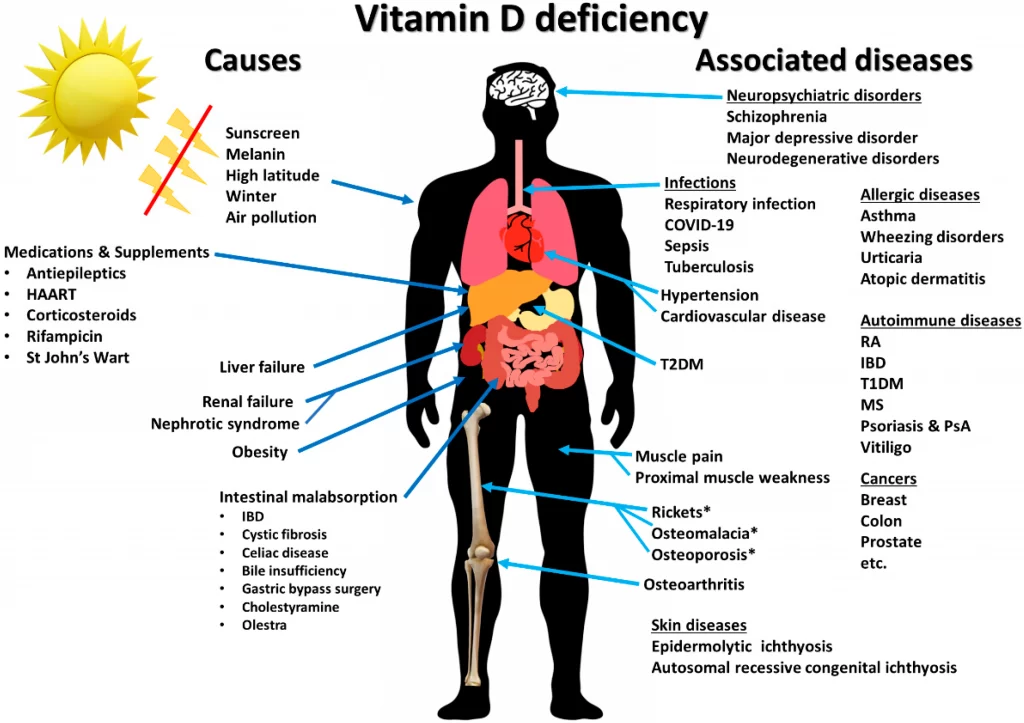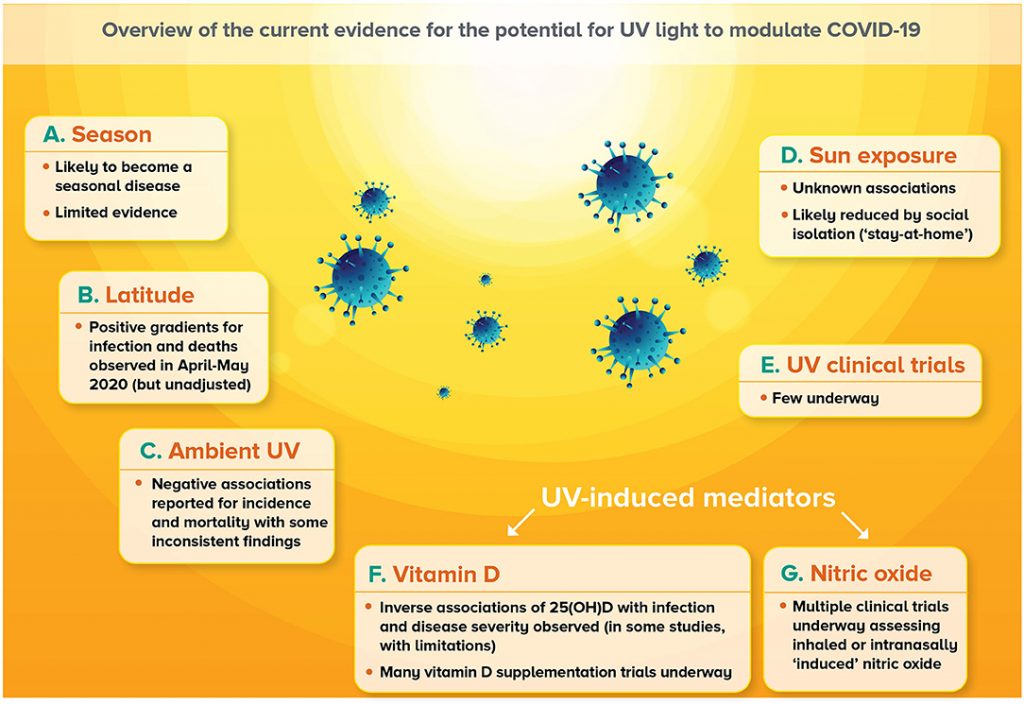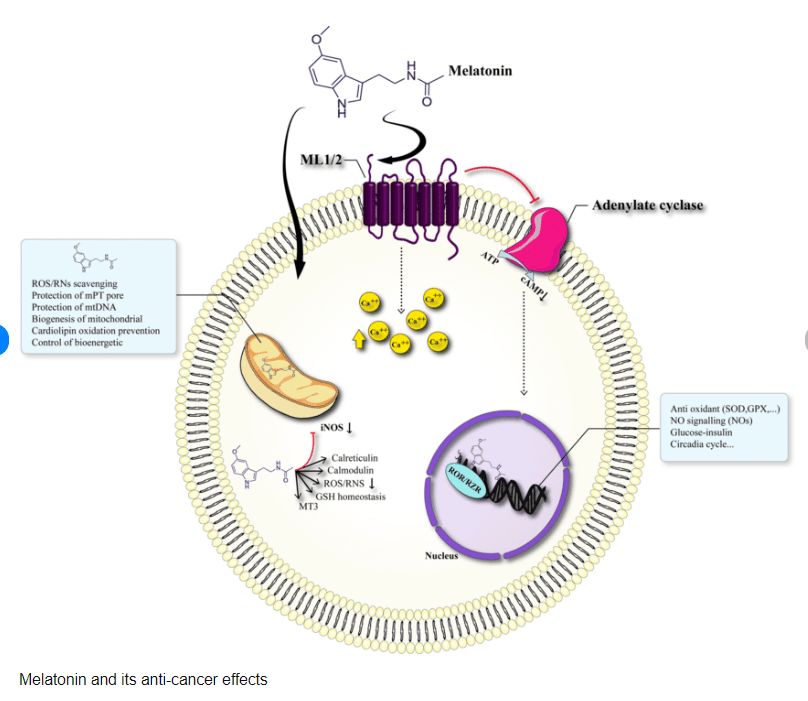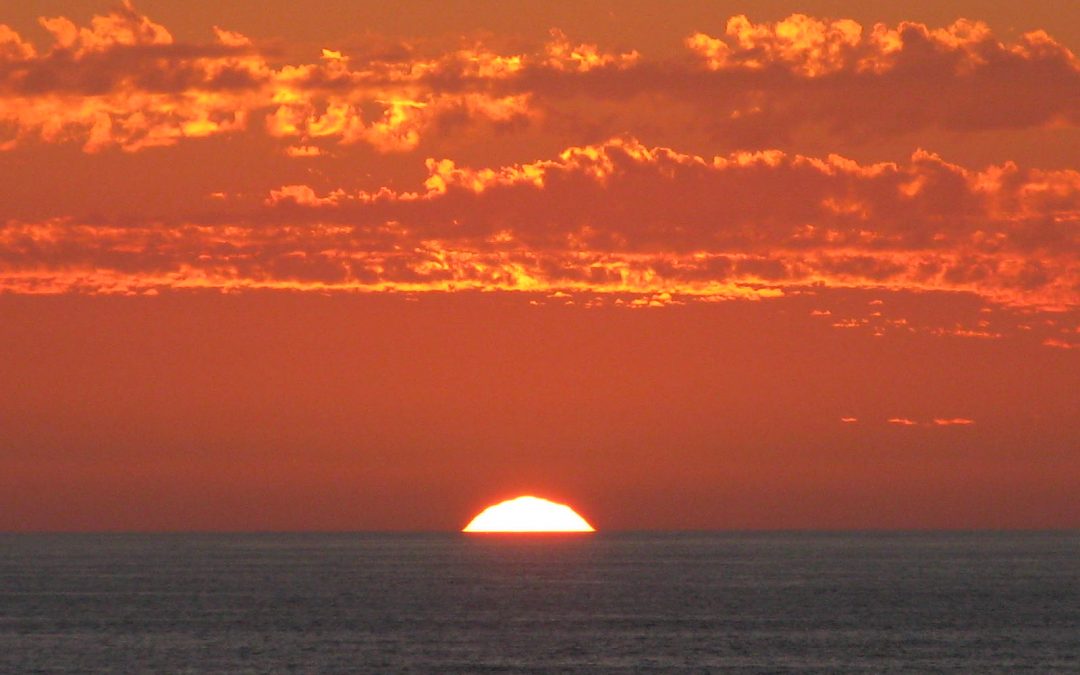1. One of the most interesting and thought-stimulating papers in the current issue is the report published by Skutsch et al.; they noted that COVID-19 deaths per million were higher in South America than in either Europe and North America, while Asia, Africa, and Oceania had death rates which were only a fifth of those in South America. Vol 5 No 3 (2022): Melatonin Research

2. They found that the COVID-19 death rate was strongly associated with overweight (BMI >25) and high latitudes but not with the vaccine coverage percentage in these countries.
3. In an attempt to explain these differences, they hypothesized that: (1) In overweight people there is less penetration of near-infrared radiation (NIR) to the depth of important organs; stimulation of these organs by NIR would result in elevated production of subcellular [mitochondrial) melatonin, a strong antioxidizing factor.

4. (2) In overweight people, fatty tissue holds much of the body´s 25(OH)D3 leaving less circulating in the blood making it less systemically protective.

5. The hypothesis advanced by Skutsch et al. receives support from an article by Zimmerman and Reiter published also in this issue.

6. They observed that large quantities of melatonin, greater than 5 pg/ml min ramp rates for plasma and sweat melatonin in human subjects, have been detected during strenuous exercise in sunlight as compared to 0.15 pg/ml min ramp rates for plasma melatonin under dim light melatonin onset conditions.

7. This difference is in excessive of 30-fold. Sunlight contains high levels of NIR which likely stimulate mitochondrial melatonin production.
“Based on an optical and biological review of the literature and the Three-dimensional Mechanistic Bio-optical Models (MBM) results, it is proposed that the near-infrared (NIR) portion of natural sunlight stimulates an excess of antioxidants in each of our healthy cells and that the cumulative effect of this antioxidant reservoir is to enhance the body’s ability to rapidly and locally deal with changing conditions throughout the day. In this approach, the role of circulatory melatonin produced by the pineal gland is to provide an efficient method of delivering supplemental melatonin during periods of low cellular activity and solar stimulus to damaged or aging cells in both diurnal and nocturnal animals. While circulatory melatonin may be the Hormone of Darkness, subcellular (mitochondrial) melatonin may be the Hormone of Daylight.” Zimmerman, S. and Reiter, R. 2019

8. High latitude has less NIR irradiation and excessive weight restricts NIR penetration to the important organs such as the lungs and heart.

9. Thus, both obesity and high latitude are factors that limit local melatonin production and compromise the protective effects of locally-produced melatonin in these important organs.

10. These observations may not only apply to COVID-19 patients but to other disorders including diabetes, neurodegenerative diseases, and seasonal depression. (cancer as well – Dr. E)

